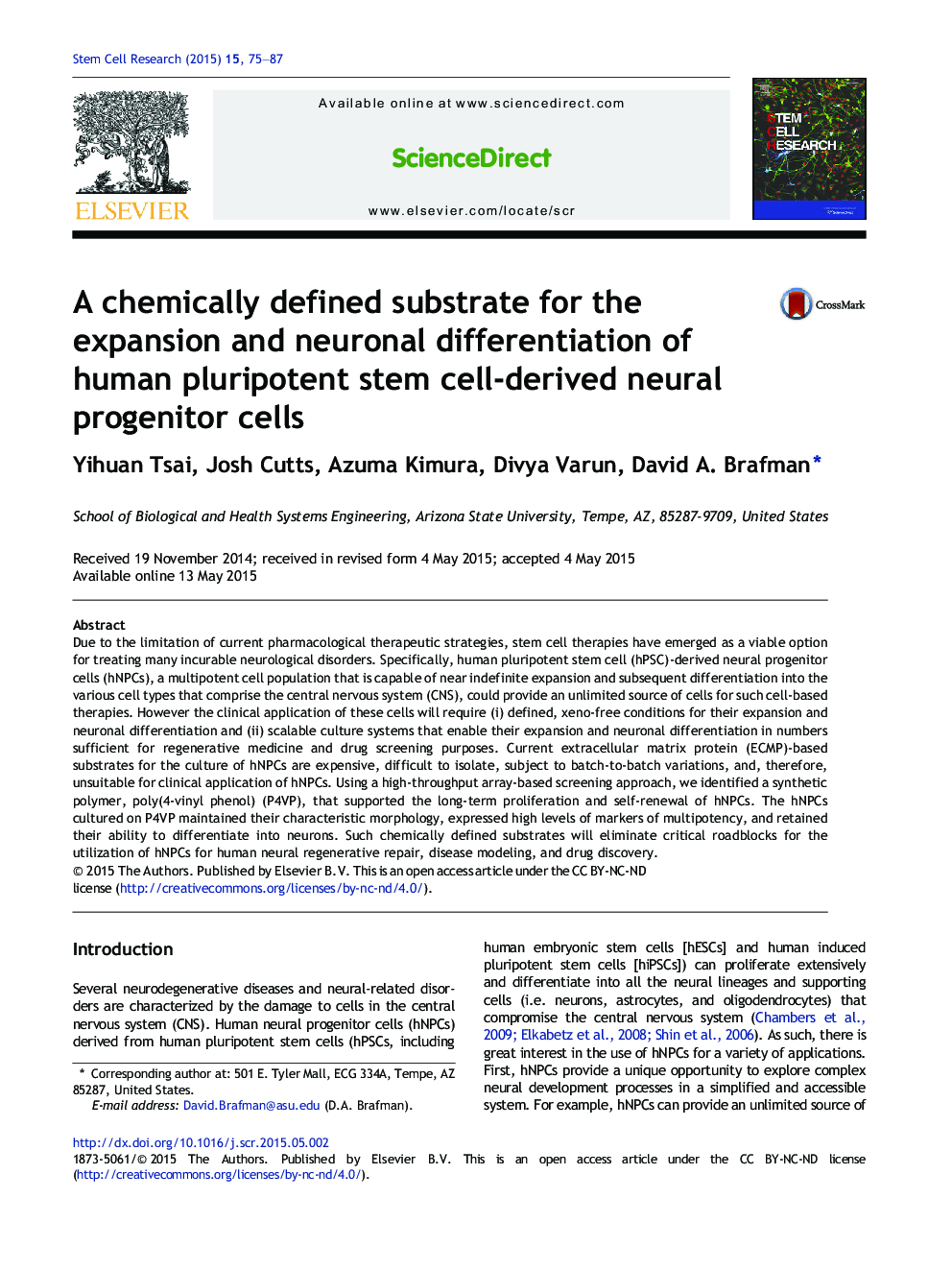| کد مقاله | کد نشریه | سال انتشار | مقاله انگلیسی | نسخه تمام متن |
|---|---|---|---|---|
| 2094072 | 1081989 | 2015 | 13 صفحه PDF | دانلود رایگان |
• High-throughput method to identify chemically defined substrate for hNPC expansion.
• hNPCs cultured on P4VP substrate are phenotypically similar to cells grown on LN.
• Improved hNPC neuronal differentiation on P4VP.
Due to the limitation of current pharmacological therapeutic strategies, stem cell therapies have emerged as a viable option for treating many incurable neurological disorders. Specifically, human pluripotent stem cell (hPSC)-derived neural progenitor cells (hNPCs), a multipotent cell population that is capable of near indefinite expansion and subsequent differentiation into the various cell types that comprise the central nervous system (CNS), could provide an unlimited source of cells for such cell-based therapies. However the clinical application of these cells will require (i) defined, xeno-free conditions for their expansion and neuronal differentiation and (ii) scalable culture systems that enable their expansion and neuronal differentiation in numbers sufficient for regenerative medicine and drug screening purposes. Current extracellular matrix protein (ECMP)-based substrates for the culture of hNPCs are expensive, difficult to isolate, subject to batch-to-batch variations, and, therefore, unsuitable for clinical application of hNPCs. Using a high-throughput array-based screening approach, we identified a synthetic polymer, poly(4-vinyl phenol) (P4VP), that supported the long-term proliferation and self-renewal of hNPCs. The hNPCs cultured on P4VP maintained their characteristic morphology, expressed high levels of markers of multipotency, and retained their ability to differentiate into neurons. Such chemically defined substrates will eliminate critical roadblocks for the utilization of hNPCs for human neural regenerative repair, disease modeling, and drug discovery.
Journal: Stem Cell Research - Volume 15, Issue 1, July 2015, Pages 75–87
